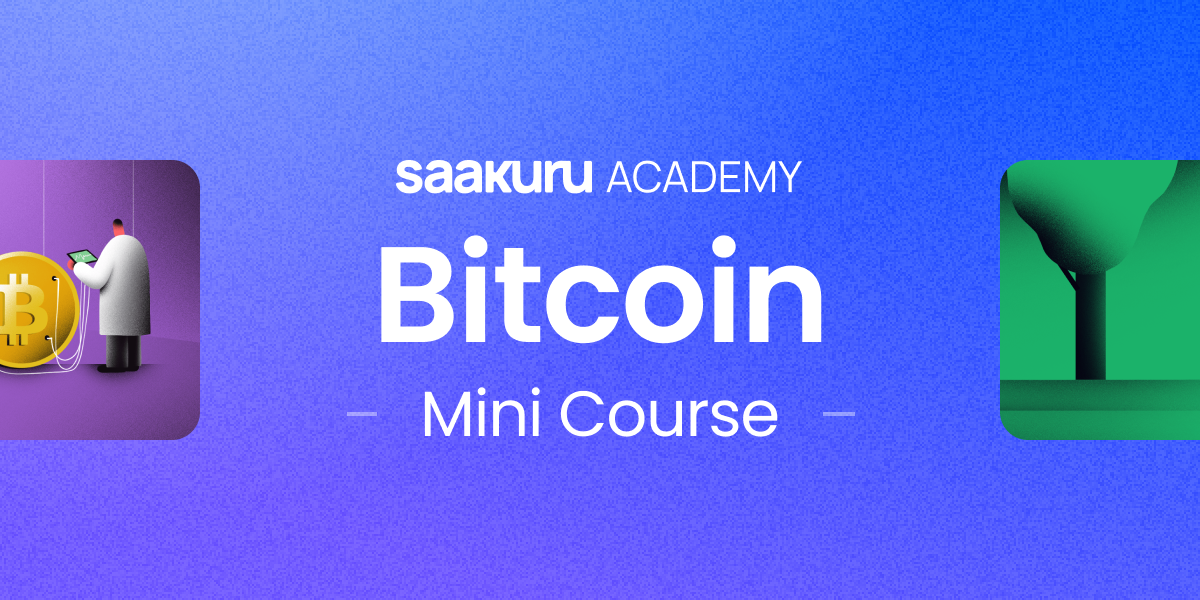
Cryptocurrency vs. digital currency: What’s the difference?
Cryptocurrencies are often referred to as digital currencies in much the same way an iPhone could be referred to as a smartphone. And while that’s not inaccurate since it is essentially an umbrella term for all digital payment types, there is a rather important difference between things like Bitcoin and Ethereum and other kinds of virtual coins or tokens.
In this AAG Academy guide, we’ll look at what makes a digital currency and why cryptocurrencies are fundamentally very different from other virtual payment options.
What is digital currency?
Digital currency is very much an umbrella term for any form of currency that is digital rather than physical. While this does include cryptocurrencies — and cryptocurrencies are often referred to as digital currencies — it also includes lots of other currencies that exist online or are stored in a digital format, including those that may only be usable inside certain apps.
For instance, both the “V-Bucks” found inside Fortnite and the “Robux” found inside Roblox are digital currencies that can be used to purchase all kinds of virtual goods. However, these currencies are limited in that they can only be used inside those specific titles. Other digital currencies are much more versatile and can be used for various different purposes.
In 2020, the Bahamas launched the world’s first central bank digital currency (CBDC) called the Sand Dollar. It is an alternative to the traditional Bahamian dollar, and while it operates in much the same way as a regular currency in that it is issued by the central bank and is available to all Bahamian citizens, it is entirely digital.
It’s also worth noting that traditional fiat currencies can be digital when it comes to online accounting. If you have $1,000 sitting in a bank account, that doesn’t necessarily mean that there is a vault somewhere with $1,000 in cash that has your name on it. That currency is digital and remains digital if you move it electronically. It only becomes physical if you withdraw it. The same can be said for alternative online payment services, such as PayPal, Apple Pay, and Cash App.
What is cryptocurrency?
The AAG Academy has an in-depth guide to cryptocurrency for those who want to learn about it in more detail — and an explainer on the difference between coins and tokens — but in a nutshell, cryptocurrency is a digital currency that’s powered by blockchain technology. There are tens of thousands of them today, and they all share that one thing in common.
One of the key functions of cryptocurrencies, just like other digital currencies, is to provide a method of payment that’s somewhat more flexible, more versatile, and more accessible than traditional currencies. However, cryptocurrencies are also used for other things, such as determining who governs a project and for sharing ownership of an asset.
Cryptocurrencies also a play a key role in the proof-of-stake (PoS) staking system, where they are used as collateral and can be destroyed if a miner acts dishonestly. This is an alternative to the proof-of-work (PoW) consensus mechanism, which uses computing power rather than cryptocurrencies to validate transactions on the blockchain.
You might be interested in: What is Cryptocurrency?
Cryptocurrency vs. digital currencies: What are the main differences?
The fundamental difference between the digital currencies mentioned above and cryptocurrencies like Bitcoin, as you may have guessed by now, is the involvement of blockchain technology. While all cryptocurrencies are powered by, recorded by, secured by, and stored on the blockchain, other digital currencies do not use blockchain technology at all.
The blockchain is the backbone of cryptocurrency, and it plays its part in everything from the distribution of new tokens to the recording of all transactions. And by its very nature, the blockchain is distributed and decentralized. Almost all other digital currencies are controlled and maintained by a central entity — usually the creator of the currency itself.
Cryptocurrencies also tend to be more versatile and more accessible than other digital currencies, many of which have limited use cases and may even be exclusive to a certain application, game, or other virtual environments.
Another advantage cryptocurrencies have over other digital payment methods is that they’re quicker and less expensive. For instance, if you want to send money to a person in another country and you use a bank transfer or a service like PayPal, it typically takes several days (depending on the countries involved) for the money to be processed and transferred. It also incurs a hefty fee, and there may be limits on how much money you can send.
If you use cryptocurrency for international transfers instead, it is instant, the fees are minimal, and there is no limit on how much money you can move. The downside that must be considered is that cryptocurrencies are more volatile than traditional currencies, and it is possible that the value of the cryptocurrency could change significantly in a short time.
You might be interested in: The difference between coins and tokens
Examples of cryptocurrencies and digital currencies
The biggest example of cryptocurrencies is one we’ve already mentioned in this guide, and that’s Bitcoin. It is not only the original cryptocurrency, which gave birth to the entire industry when it launched in 2009, but it is also the most valuable by a huge margin. Bitcoin’s current market capitalization is a whopping $370 billion — more than twice that of Ethereum’s.
Ethereum is the second-biggest cryptocurrency in terms of market value, however, followed by Tether, USD Coin, and Binance Coin.
Examples of digital currencies include those we’ve already mentioned above, such as V-Bucks and Robux, as well as other virtual currencies you may use inside an application or virtual environment. They can also include things like reward points and frequent flyer miles, which can be used like cash to cover the cost of a product or service.
References
Frequently Asked Questions
A virtual currency usually refers to a form of digital money used inside a virtual environment, which could be an application, a game, or the Metaverse. It typically acts like money, allowing you to purchase virtual goods, but it is usually exclusive to one environment.
The term can also be used to describe cryptocurrencies since they are virtual currencies by their very nature. However, it is an umbrella term, in much the same way that “smartphone” could be used to describe an iPhone.
Digital money, as the name suggests, is money that is used and stored digitally. It includes the virtual currencies mentioned above, as well as things like gift cards and rewards points. It can also be used to describe money that’s used in online banking, since that is also digital until it is withdrawn into its physical form.
Digital are typically a unit of digital or virtual currency, such as one Bitcoin or one V-Buck.
Disclaimer
This article is intended to provide generalized information designed to educate a broad segment of the public; it does not give personalized investment, legal, or other business and professional advice. Before taking any action, you should always consult with your own financial, legal, tax, investment, or other professional for advice on matters that affect you and/or your business.
Get news first
Be the first to get our newsletter full of company, product updates as well as market news.

















